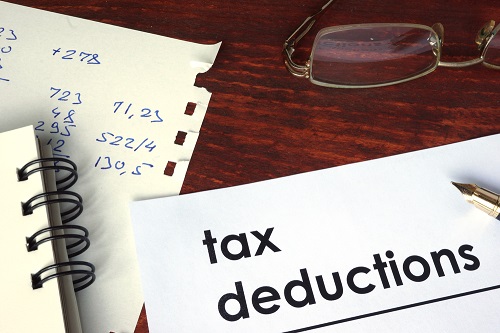Section |
Deductee |
Type of Transaction |
Threshold Limit |
TDS Rate |
192 |
Resident, Non-Resident |
Salary Payment |
Basic exemption limit of payee |
As per normal slab rates |
192A |
Resident, Non-Resident |
Premature withdrawal from Employee Provident Fund |
₹50,000 |
10% |
193 |
Resident |
Interest earned on securities such as equity instruments, debt bonds, savings bonds and others. |
Debentures- ₹5,000 8% Savings (Taxable) Bonds 2003 or 7.75% Savings (Taxable) Bonds 2018 - ₹10,000 Other - NIL |
10% |
194 |
Resident |
Dividend payment |
₹5,000 |
10% |
194A |
Resident |
Interest from other sources (not securities) - post office/bank/co-operative society deposits |
Senior Citizens- ₹50,000 Others - ₹40,000 |
10% |
194A |
Resident |
Interest from sources apart from interest on securities under Section 193 and interest from banks/post office/co-operative society. |
₹5,000 |
10% |
194B |
Resident, Non-Resident, Foreign Company |
Earnings from crossword puzzles, lotteries, card games and such. |
₹10,000 |
30% |
194BB |
Resident, Non-Resident, Foreign Company |
Earnings from equestrian races |
₹10,000 |
30% |
194C |
Resident |
Payment made to contractor/sub-contractor: Individuals/Hindu Undivided Family |
Single transaction- ₹30,000 Net transactions- ₹1 Lakh |
1% |
194C |
Resident |
Payment made to contractor/sub-contractor: Individuals/Hindu Undivided Family |
Single transaction- ₹30,000 Net transactions- ₹1 Lakh |
2% |
194D |
Resident |
Insurance commission payable to domestic companies |
₹15,000 |
10% |
194D |
Resident |
Insurance commission payable but not to companies |
₹15,000 |
5% |
194DA |
Resident |
Income for the insurance benefit payout, during payment of the sum under a life insurance policy. |
₹1 Lakh |
5% |
194E |
Non-Resident, Foreign Company |
Payment to non-resident sportsmen/sports association |
NIL |
20% |
194EE |
Resident, Non-Resident |
Payment to a National Savings Scheme (NSS) account holder. |
₹2,500 |
10% |
194F |
Resident, Non-Resident |
Payment for unit repurchase by Unit Trust of India (UTI) or a Mutual Fund |
NIL |
20% |
194G |
Resident, Foreign Company, Non-Resident |
Payments, commission, etc., on the sale of lottery tickets |
₹15,000 |
5% |
194H |
Resident |
Commission/brokerage |
₹15,000 |
5% |
194-I |
Resident |
Rent on plant/machinery |
₹2,40,000 |
2% |
194-I |
Resident |
Rent on land/building/furniture/fitting |
₹2,40,000 |
10% |
194-IA |
Resident |
Payment for transferring certain immovable property (not agricultural land) |
₹50 Lakh |
1% |
194-IB |
Resident |
Rent paid by an individual or HUF not covered under Section 194-I |
₹50,000 p. a |
5% |
194-IC |
Resident |
Payment under Joint Development Agreements (JDA) to Individual/HUF |
NIL |
10% |
194-J |
Resident |
Any amount paid as professional services fees |
₹30,000 |
10% |
194-J |
Resident |
Amount paid for a director’s remuneration/fee/commission |
₹30,000 |
10% |
194-J |
Resident |
Any sum paid for not carrying out any activity concerning any business; |
₹30,000 |
10% |
194-J |
Resident |
Any sum paid for not sharing any know-how, patent, copyright, etc. |
₹30,000 |
10% |
194-J |
Resident |
Any sum paid as a fee for technical services |
₹30,000 |
2% |
194-J |
Resident |
Amount paid as royalty towards the sale/distribution/exhibition of cinematographic films |
₹30,000 |
2% |
194-J |
Resident |
Any sum paid as technical services fees, but the payee is engaged in the business of operation of the call centre. |
₹30,000 |
2% |
194K |
Resident |
Amount paid for units of a mutual fund, for example, dividend |
NIL |
10% |
194LA |
Resident |
Amount paid to compensate the acquisition of certain immovable property |
₹2.5 Lakh |
10% |
194LB |
Non-Resident, Foreign Company |
Interest payment on infrastructure debt fund to Non-Resident |
NIL |
5% |
194LC |
Foreign Company/Non-Resident |
Interest paid for the loan borrowed in foreign currency by an Indian company/business trust against loan agreement or long-term bonds |
NIL |
5% |
194LC |
Non-Resident, Foreign Company |
Interest paid for the loan borrowed in foreign currency by an Indian company/business trust against long-term bonds under IFSC |
NIL |
4% |
194LD |
Non-Resident, Foreign Company |
Interest payment on rupee-denominated bond to Foreign Institutional Investor or a Qualified Foreign Investor |
NIL |
5% |
194LBA – 1 |
Resident |
Certain income distributed to a unitholder by a business trust |
NIL |
10% |
194LBA – 2 |
Foreign Company/Non-Resident |
Business trust’s interest income from special purpose vehicle distribution to unitholders |
NIL |
5% |
194LBA – 2 |
Non-Resident, Foreign Company |
A business trust’s dividend income distributed to a unitholder from a special purpose vehicle, in which the business holds the share capital (not the government capital) |
NIL |
10% |
194LBA – 3 |
Non-Resident Indian |
Rental income payment of assets owned by the business trust to the unitholders. |
NIL |
30% |
194LBA – 3 |
Foreign Company |
Rental income payment of assets owned by the business trust to the unitholders. |
NIL |
40% |
194LBB |
Resident, Non-Resident Indian |
Certain income paid to a unitholder as investment fund units. |
NIL |
10% |
194LBB |
Foreign Company |
Certain income paid to a unitholder as investment fund units. |
NIL |
40% |
194LBC |
Resident |
Income from investment in securitisation fund received to an individual and HUF |
NIL |
25% |
194LBC |
Resident |
Income from investment in securitisation fund received to a domestic company |
NIL |
10% |
194LBC |
Foreign Company |
Income from investment in securitisation fund received to a foreign company |
NIL |
40% |
194LBC |
Non-Resident Indian |
Income from investment in securitisation fund received to NRI |
NIL |
10% |
194M |
Resident |
Certain payments by Individual/HUF not liable to deduct TDS under Section 194C, 194H, and 194J |
₹50 Lakh |
5% |
194N |
Resident, Non-Resident |
Cash withdrawal exceeding a certain amount |
₹1 crore |
2% |
194N |
Resident, Non-Resident |
Cash withdrawal in case person not filing ITR for last three years and the original ITR filing due date expired |
₹20 Lakh – ₹1 crore
₹1 crore |
2%
5% |
194O |
Resident |
Payment for the sale of goods/provision of services by the e-commerce operator through its digital or electronic facility or platform. |
₹50 Lakh |
1% |
194P |
Resident |
Payment of pension or interest to specified senior citizens aged 75 years and above |
Basic exemption limit for senior citizens/super senior citizens |
Normal tax slab rates |
194Q |
Resident |
Payments for the purchase of goods |
₹50 Lakh |
0.10% |
194R |
Resident |
Perquisite or benefit to a business or profession |
₹20,000 |
10% |
194S |
Resident |
TDS on transferring of virtual digital assets |
Specified Persons - ₹50,000
Others - ₹10,000 |
1% |
195 |
Non-Resident |
Income on investments made by NRI citizen |
NIL |
20% |
195 |
Non-Resident |
Income from LTCG referred to in Section 115E in the case of a Non-Resident |
NIL |
10% |
195 |
Non-Resident, Foreign Company |
Income from LTCG under Section 112(1)(c)(iii) |
NIL |
10% |
195 |
Non-Resident, Foreign Company |
LTCG income under section 112A |
NIL |
10% |
195 |
Non-Resident, Foreign Company |
STCG income under section 111A |
NIL |
15% |
195 |
Non-Resident, Foreign Company |
Any other income earned from LTCG |
NIL |
20% |
195 |
Non-Resident, Foreign Company |
Interest payable on money borrowed by the government or Indian concern in foreign currency |
NIL |
20% |
195 |
Non-Resident, Foreign Company |
Royalty income payable by the Indian concern/government, for the copyright in a subject referred in the first proviso of section 115A or computer software as per the second proviso of section 115A |
NIL |
10% |
195 |
Non-Resident |
Royalty income payable by government or Indian concern as per an agreement on matters included in the industrial policy |
NIL |
10% |
195 |
Foreign Company |
Royalty income payable by government/Indian concern under an agreement on matters included in the industrial policy, if the payment agreement was made 31st March 1961 and 1st April 1976 |
NIL |
50% |
195 |
Foreign Company |
Royalty income payable by government/Indian concern as per an agreement on matters included in the industrial policy, if the payment agreement is entered after 31st March 1976 |
NIL |
10% |
195 |
Foreign Company |
Income from technical services remuneration payable by government or Indian concern under an agreement on matters related to industrial policy |
NIL |
10% |
195 |
Non-Resident |
Income from technical services remuneration payable by government or Indian concern as per an agreement on matters related to industrial policy, if the payment agreement was made between 29th February 1964 and 1st April 1976 |
NIL |
50% |
195 |
Foreign Company |
Income from technical services fees paid by government or Indian concern as per agreement (payment agreement made after 31st March 1976) on industrial policy |
NIL |
10% |
195 |
Non-Resident |
Other income sources |
NIL |
30% |
195 |
Foreign Company |
Other income sources |
NIL |
40% |
196B |
Non-Resident, Foreign Company |
Income (including LTCG) from units of an offshore fund |
NIL |
10% |
196C |
Non-Resident, Foreign Company |
Income (including LTCG) from global depositary receipt of an Indian firm or foreign currency bonds |
NIL |
10% |
196D |
Foreign Company/Non-Resident |
Income (not capital gain or dividend) from Foreign Institutional Investors. |
NIL |
20% |

 FOR EXISTING POLICY
FOR EXISTING POLICY  1860 266 9966
1860 266 9966
 FOR NEW POLICY
FOR NEW POLICY 















